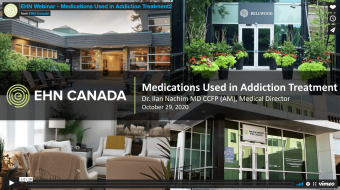Fortunately, when it comes to being addicted to some drugs, there are medicines that work to reduce the effects of withdrawal and/or reduce cravings. With respect to opioid use disorder these medications reduce mortality rates as they significantly reduce the chance of relapse and overdose. In fact, for persons who have been injecting opioids for years, the recommended treatment would be suboxone or methadone maintenance.
Prescription medications are free for everyone under the age of 25 in Ontario, as of January 2018, giving access to over 4,400 medicines completely free of charge. This is all part of the OHIP+ Children and Youth Pharmacare Program which includes hydromorphone, as well as depression and anxiety medications. Remember to always ask the pharmacist if your medications are covered. (Ministry of Health)
Here is a list of medication assisted treatments for various drugs:
| Drug Addicted to | Approved Medications | Potential Medications |
|---|---|---|
| Opioids (OxyContin, Percocet, Fentanyl) |
Buprenorphine and Naloxone (Suboxone) Buprenorphine Methadone Hydromorphone Naltrexone (Revia) (Apo-Naltrexone) (Vivitrol) |
How it Works
Until recently, methadone was the primary drug prescribed for the treatment of opioid use disorder. However, the chance of an overdose is 6 times higher with methadone than with buprenorphine (Suboxone). BC and Ontario have now made Suboxone the primary drug prescribed for opioid use disorder and it is on the provincial formularies, meaning those who qualify will receive the drug free of charge. Other provinces will likely follow BC and Ontario.
Buprenorphine is a partial opiate agonist. It binds to the opioid receptors in the brain, relieving symptoms of withdrawal and cravings without producing a high. It is the safest of the opioid medications. It is now available as an implant in the US. Suboxone is a sublingual strip or pill (it goes under your tongue).
Methadone is used in the case of a severe addiction to opioids where Suboxone does not sufficiently releave the symptoms of withdrawal. Methadone is a full opioid agonist, like heroin. It binds to the opioid receptors in the brain, relieving symptoms of withdrawal and cravings.
In the most severe cases where persons on methadone continue to relapse, hydromorphone can be prescribed to prevent withdrawal and cravings.
In persons motivated to choose abstinence, naltrexone can be used to manage cravings. Revia and Apo-Naltrexone are the pill form of naltrexone and must be taken daily. Vivitrol is the injectable form of naltrexone which lasts one month. Vivitrol is currently not available in Canada and costs about $1,000 per shot in the US. However, physicians may apply to get Vivitrol for a specific patient under Health Canada’s Special Access Program. Due to a loss of tolerance there is a high risk of overdose if naltrexone is discontinued and there is a return to opioid use.
| Drug Addicted to | Approved Medications | Potential Medications |
|---|---|---|
| Alcohol | Disulfiram Naltrexone (Revia) (Apo-Naltrexone) (Vivitrol) Acamprosate (Campral) |
Baclofen Topiramate (Topamax) |
How it Works
Disulfiram causes uncomfortable nausea and headache when combined with alcohol.
Naltrexone blunts the euphoric effects of alcohol. You do not have to be abstinent from alcohol to use naltrexone. Vivitrol is the injectable form of naltrexone which lasts one month. Vivitrol is currently not available in Canada and costs about $1,000 per shot in the US.However, physicians may apply to get Vivitrol for a specific patient under Health Canada’s Special Access Program.
Campral helps prevent alcohol relapse likely by reducing withdrawal symptoms like anxiety, insomnia and cravings.
Baclofen is currently used as a muscle relaxant and Topomax as an anti-seizure drug. They are being studied for their effects on reducing alcohol relapse rates.
| Drug Addicted to | Approved Medications | Potential Medications |
|---|---|---|
| Nicotine | Nicotine Varenicline (Champix) Bupropion (Wellbutrin) Nortriptylline |
Mecamylamine |
How it Works
Nicotine replacement products including gum, patches, lozenges and inhalers (sprays or vapes) allow smokers to stop smoking without suffering withdrawal and cravings.
Champix is a partial agonist. It blocks the nicotine receptors in the brain, reducing withdrawal symptoms and craving.
Wellbutrin is an antagonist at the nicotine receptor, blocking any nicotine effect.
Mecamylamine (an antihypertensive) is being studied.
| Drug Addicted to | Approved Medications | Potential Medications |
|---|---|---|
| Cannabis | none |
buspirone nabilone |
How it Works
Buspirone, dronabinol, nabilone, entacapone and lithium are all available drugs used to treat other conditions. They are being studied for treatment of cannabis use disorder.
URB-597 and MLA endocannabinoid-metabolizing enzyme blockers are experimental.
| Drug Addicted to | Approved Medications | Potential Medications |
|---|---|---|
| Cocaine | none | Disulfiram Topiramate Tiagabine (Gabitril) Modafenil (Provigil) Lisdexamfetamine (Vyvanse) Nacetylcystine (NAC) Amantadine Bromocriptine Gabapentin (Neurontin) Nocaine |
How it Works
These are all drugs that are used for other conditions (except Nocaine) and are being studied for their use in cocaine use disorder. Currently there is a controversy about treating an addiction to stimulants (like cocaine or methamphetamine) with other stimulants.
| Drug Addicted to | Approved Medications | Potential Medications |
|---|---|---|
| Amphetamine Methamphetamine |
none | none |
FAR would like to thank Dr. Meldon Kahan for reviewing the Medication Assisted Treatment (MAT) section of this website for accuracy.
EHN Canada Webinar: Medications Used in Addiction Treatment
With Dr. Ilan Nachim HBSc MSc MD CCFP, Medical Director of Bellwood Health Services.
Everyone has different needs in recovery. Long-term substance use has a disruptive effect on the brain’s neurochemical processes, altering the way pleasure and reward centers work. Withdrawal symptoms and cravings can be particularly challenging barriers for people struggling to overcome dependence on alcohol or drugs. Some patients also have medical complications in addition to their addiction disorder. There are some key medications that can help stabilize patients in detox and early recovery, both complementing and reinforcing ongoing therapy, and making it easier to stay alcohol and drug free.
